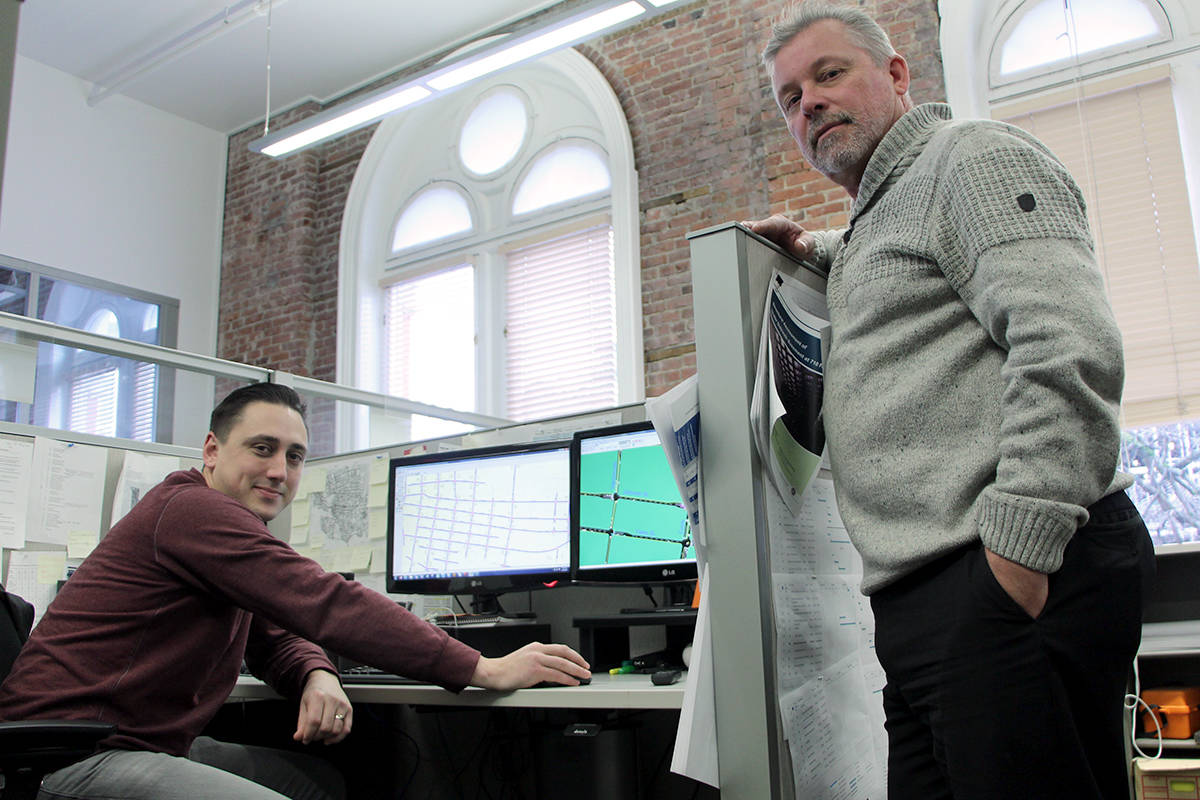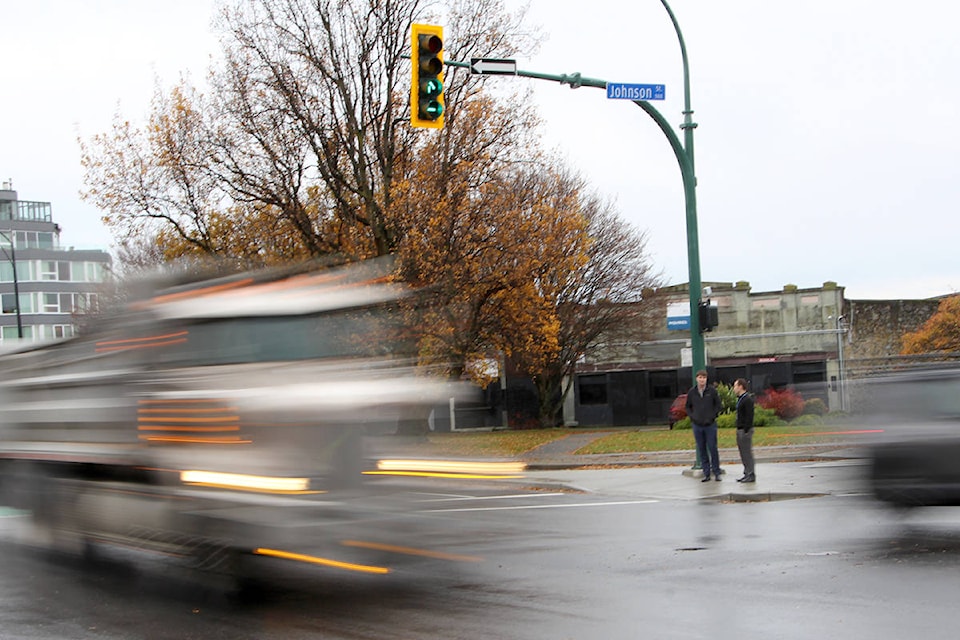The City of Victoria is looking at spending $40,000 to study traffic signal timings in the downtown core.
New developments, an aging demographic, increased densification and new bike lanes in downtown Victoria are among the changes seen since the City’s signals system’s last update in 2009.
Those changes impact traffic and pedestrian movements and are among the reasons City staff are asking council to approve hiring a consultant in 2018 to review the entire network of downtown traffic. Among other things, a consultant would be asked to look at pedestrian walking times, do counts for vehicles at intersections and update the traffic simulation model.
Brad Delleburr, the City’s assistant director of transportation, said his department investigates complaints and makes tweaks to signal timings as issues crop up, but he said it’s time for a review. “It’s just due diligence to look at traffic signals on a regular basis and make sure the signals are operating as efficiently as possible,” he said.
Cycling corridors are another area the consultant would examine. The length of green lights could be shortened for cyclists in low-volume periods of the day, or there could be streets where right or left turns are not permitted.
“Any time you put in a new facility [such as bike lanes] you have to assign time to that,” Delleburr said. Those additions impact other modes of transportation, he added. “Even six months in on Pandora [bike lanes], we’ve noticed some things we could tweak there to make it a little bit better.”
If the hiring of a consultant is approved, the work would include analyzing the City’s current traffic monitoring system, collecting new data and doing observations on site.
Do you get stuck at every right light on your morning commute? Victoria is considering spending $40,000 to study traffic light timings. MORE: https://t.co/jGJ66HRGj5 #yyj #yyjtraffic pic.twitter.com/g6zip4grb7
— Victoria News (@VictoriaNews) November 30, 2017
The intersection of Johnson and Blanshard streets, for example, is one place the consultant may study. Depending on the time of day, if a driver turns onto Johnson from Blanshard from either direction, they may make it through the next signal at Quadra Street, but have to stop at Vancouver Street.
“The thing we’ve been hearing from people is the progression, the signal-to-signal movements, probably aren’t as smooth as they could be,” Delleburr said. “Under the signal timing study, the progression may slightly change in how many lights you make it through before you have to come to a stop.”




